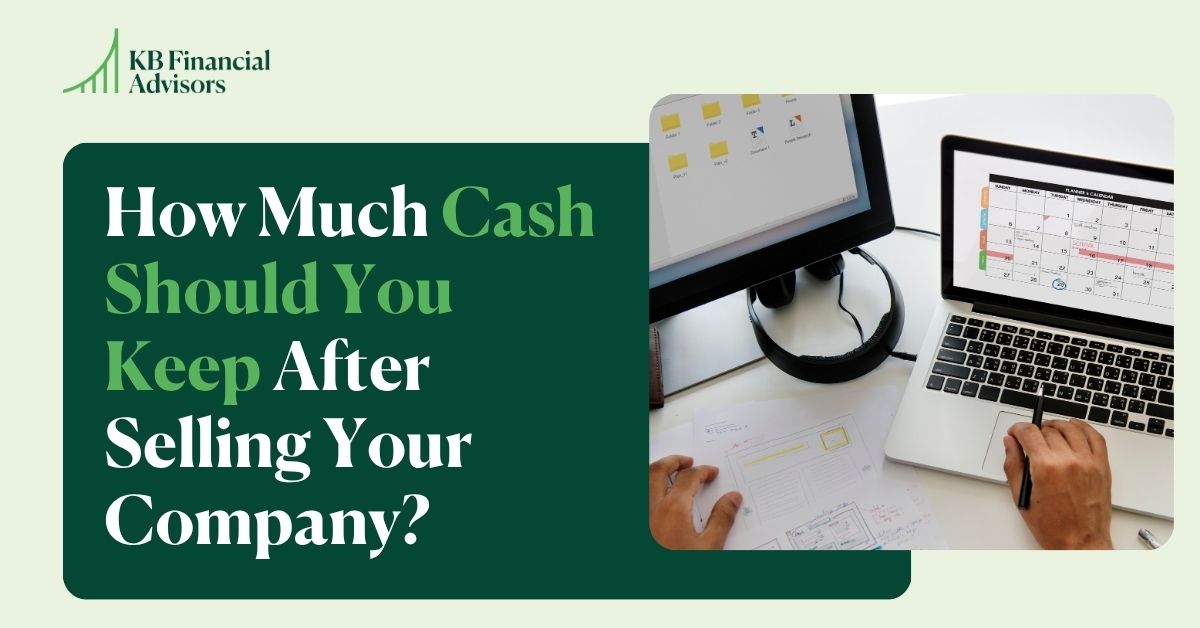How to properly take time away from work to benefit your career and financial goals.
There’s a special kind of burnout professionals in knowledge-based tech careers grapple with. Building a successful career on your mind and expertise is incredibly rewarding, but it demands a great deal of mental energy.
The remainder of your career can easily be worth millions of dollars, so there’s good reason to set yourself up for long-term success. Income from your career is the main driver on your path to financial freedom, making it undoubtedly worthy of your care, attention, and management.
Whether your burnout is fueled by all-day back-to-back meetings, multiple rounds of layoffs, or inefficient uses of your time, you can still get your spark back.
You may be past your phase of having endless energy and an unwavering drive to kill it at work, but that doesn’t mean you’re past your prime. You just need to tweak your approach.
If you’re constantly wondering how much longer you can keep going, it may be time to change your relationship with work. Though it may seem counterintuitive, the best thing you can do for your demanding tech career is to take healthy time away from it.
Shift your mindset around work & rest
Your decades-long career is like a marathon that you don’t want to keep a steady pace in. You instead want to sprinkle in sprints and walks.
Olympian Jeff Galloway wrote about this very approach to help beginners effectively complete races in his book, “The Run Walk Run Method.” Though his advice has to do with actual running, a lot of Galloway’s teachings can serve as a metaphor to your career.
Take time to recognize that your career requires effort that spans a long distance — we’re talking 40 years — so it’s only natural for it to consist of different phases that call for varying paces.

Barney from “How I Met Your Mother” looks at marathons with the mindset you likely had early on in your career: “Step one: You start running… There is no step two.”
When you’re young, energetic, and have fewer competing priorities, it’s normal to work nonstop. And while this approach might make sense early on, at a certain point in time, always going hard stops being sustainable.
If you’ve reached a similar breaking point, it’s a sign you need to change your mindset around work and rest.
Though it may feel counterintuitive, taking breaks is essential to managing your effort and keeping burnout at bay. I’m personally a huge fan of the Entrepreneurial Time System by Strategic Coach. Their “Free Days” philosophy reverses the way we typically think about taking time off. Rather than treat paid time off as something you earn for hard work, Free Days are days you take off to enable hard work afterward. Shift your mindset to see your breaks as rest that fuels your work performance. You need breaks in the same way you need sleep.
Not all breaks look the same; you can take time off and return to your job, or leave one job and rest before you begin another. Let’s explore both avenues.
Taking work breaks while employed
If you have a job you’re not quite ready to leave, you can still take breaks that’ll keep you at the top of your game.
One option is using your paid time off. Some people have a harder time being out of the office than others. If you feel guilty about taking time off, remember the Free Days approach. Rest is not something you need to earn or only do if XYZ goal happens. You should take vacations not because they’re a reward for your work, but because they’re essential to fuel your career.
When planning your PTO, make sure you take at least one vacation per year. Beyond frequency, duration matters too. A weekend getaway will not give you the same reset that a weeks-long trip can. At the very least, give yourself a week to unplug. But a two-to-four week vacation is best, if possible. It’s critical to always have a break to look forward to, so start planning your next vacation as soon as you’re back from your previous one. Be sure to book and plan everything ahead of time so you can block off those days on your calendar.
On top of your PTO, you should take smaller, more frequent breaks that can be as short as 30 minutes. Many companies are wise to exhibit no-meeting days that allow you to work uninterrupted or pencil in time to breathe. Some of my clients book phantom meetings on their calendars too. These time blocks carve out space to focus on important projects, get outside, or simply rest. Don’t be afraid to have fun with the process because life’s too short to take everything seriously. If it helps, you can even invent an imaginary coworker, Steve, who holds you accountable for your mental health and work productivity. Have all your phantom meetings with Steve and use them as an opportunity to check in with yourself.
Taking full-on career breaks
Breaks between jobs require a different approach, as they entail quitting your job. These periods tend to last anywhere from three to twelve months. Career breaks can be shorter but giving yourself at least three months can help you achieve a full reset. Capping your break at a year is probably best. I’ve heard from multiple clients that their professional networks start to feel stale at their break’s one-year mark, making it harder to re-engage in their career.
Planning is helpful but you don’t need to enter your break knowing how long it’ll last for. Spend the first month of your hiatus just focusing on fully unplugging and getting out of work mode. Once you’re a few weeks into your break, you can start figuring out how long you want it to last.
From a financial standpoint, the best way to go about taking a break is to plan well in advance. Identify a date to quit 18 months ahead of time and let your financial advisor in on your intentions so they can plan accordingly. Once you have a date set, shift your focus to building up cash. Identify your monthly expenses and save enough cash to cover them. Also, recognize your expenses will likely be different when you’re not commuting to work or eating lunch by the office. Many of my clients spend 25 to 40% of their income on career-related expenses, so you may require significantly less cash than you expect. When planning, you should also consider special, one-time expenses, like trips, and save cash for those as well.
Where you store your cash matters. Opt for a high-yield savings account or a money market fund rather than a checking account. These options allow your idle money to grow faster than a checking account does, and that’s especially the case now that interest rates are high.
The next thing to plan for is health insurance. You have three options to consider:
- COBRA: This option allows you to continue with the exact coverage you had during your employment. The downside is you must pay the full cost, which can get pricey. When you’re employed, your employer typically pays for a large portion of your health insurance plan, while the remaining portion is deducted from your pay. With COBRA, you pay the employee premium you’ve always paid, plus the portion your employer used to pay. Beyond cost, another disadvantage to consider is COBRA’s time limitations around how long you can maintain your coverage after leaving your job.
- Marketplace plans: These individual plans comply with the Affordable Care Act. which created a health insurance marketplace at Healthcare.gov. The advantages of marketplace plans is how standard and comprehensive they are. That means if you liked the health plan your employer provided, there’s a good chance you’ll find a marketplace plan that’s similar to it. The disadvantage to marketplace plans is they tend to be expensive, depending on your needs. Marketplace plans must meet Affordable Care Act requirements like mandatory coverage for maternity care, which policyholders must pay for regardless of their individual characteristics. These plans also cover preventative care, which not everyone uses. Beyond covering services you may not need, marketplace plans face limitations in how much plan costs differ based on age. That means younger folks — who tend to pose less risk to insurers — must pay more than they would elsewhere, while older folks — who got the longer end of the stick — pay less.
- Major medical plans: You can purchase these plans directly from individual insurers. Major medical plans do not comply with the Affordable Care Act, so they often don’t provide coverage for things like maternity and preventive care. They’re more focused on catastrophic medical events, like traumatic accidents involving an emergency surgery and extended hospital stay, or an unexpected cancer diagnosis. Since their limited coverage mainly focuses on low-probability, high-cost medical events, major medical plans usually cost less than COBRA or marketplace plans.
Ultimately, only you know the best health insurance plan for yourself, your budget, and your comfort with risk. So, explore your options and choose what works best for you.
The last thing you want to plan for before you take a career break is taxes. The goal with taxes is always to pay at the lowest possible rate. Optimize your taxes every year and you’ll lower the total tax you pay over your lifetime. Tax planning can lead to significant savings, which is especially important when you’re out of work and not getting paid.
When you take a three-to-twelve month break from work, odds are your tax bracket or marginal tax rate (the rate you pay on your next dollar of income) will drop. When planning your break, aim to start and end it in the same calendar year. For instance, if you’re going to take six months off, don’t quit your job in October, where only three of those months fall in the calendar year. Instead, start your six-month break between January and June. Taking your entire break in one calendar year will have the greatest impact on your income, maximizing your opportunity to save on taxes. Spend your lower-earning year looking for opportunities to add income from other sources. You’ll pay taxes on that income at lower rates than in years when you’re maximizing your career income.
Advice from someone who recently had a career break
Don’t just take my word for it. Hear from a busy professional who’s recently been there.
One of my clients took a three-month break from his job earlier this year and he graciously shared some tips to help you make the most of yours. For context, his New Zealand roots taught him to prioritize rest in his career, so he took a three-month unpaid leave to get the break he needed.
Here are this client’s two main learnings:
- Duration is important. Your break has to be long enough for your mind to shift out of work and worry mode. He personally needed at least one to two weeks to completely stop thinking about work. You want to minimize worrying thoughts about what you need to do, should do, or have to do, etc.
- Get comfortable doing nothing. Avoid thinking about your break like it’s an opportunity to do all the things you couldn’t do when you were working or to pick up a side hustle. While this may feel like a mental shift, it’s just redirecting your work–oriented mind to something else. Turning your career break into a series of tasks is essentially creating another job for yourself. Instead, spend your time off intentionally resting to truly turn your working mind off.
Start planning for your next break
Remember, your mind is your most valuable asset, so take good care of it. It’s time to dig yourself out of your burnout and start managing your fatigue proactively.
Burnout can build up over the course of years or even decades, so don’t expect the fix to happen overnight. Work with a financial advisor to take a strategic approach to your career break, without impeding your financial goals. Book a call today to talk to myself or another expert on our team about preparing for your next break.



